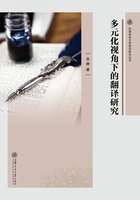
参考文献
[1] AGORNI M. Locating systems and individuals in translation studies[C]//WOLF M, FUKARII A. Constructing A Sociology of Translation. Amsterdam: John Benjamins. 2007: 123-134.
[2] BOURDIEU P. Distinction: A Social Critique of the Judgment of Taste[M]. New York and London: Routledge, 1984.
[3] BOURDIEU P. In Other Words[M]. Stanford: Stanford University Press, 1990.
[4] BOURDIEU P. Language and Symbolic Power[M]//Trans. RAYMOND G, ADAMSON M. Cambridge: Polity Press, 1991.
[5] BOURDIEU P. The forms of capital[C]//HALSEY A H, LAUDER H, BROW P et al.. Education, Culture, Economy, Society. Oxford: Oxford University Press, 1997: 46-58.
[6] BOURDIEU P, PASSERON J C. Reproduction in Education Society and Culture[M]. London: Sage, 1990.
[7] BOURDIEU P, WACQUANT L. An Invitation to Reflexive Sociology[M]. Chicago: The University of Chicago Press, 1992.
[8] CHANG N F. In defence of polysystem theory[J]. Target, 2011, 23(2): 311-347.
[9] CHAPMAN R. The language of Thomas Hardy[M]. London: Macmillan, 1990.
[10] CHESTERMAN A. Memes of Translation: The Spread of Ideas in Translation Theory[M]. Amsterdam and Philadelphia: John Benjamins, 1997.
[11] CHESTERMAN A. Description, explanation, prediction: A response to Gideon Toury and Theo Hermans[C].//SCHAFFNER C. Translation and Norms. Clevedon: Multilingual Matters, 1999: 90-97.
[12] EVEN-ZOHAR I. Polysystem theory[J]. Poetics Today, 1990, 11(1): 9-26.
[13] GENTZLER E. Contemporary Translation Theories[M]. Clevedon: Multilingual Matters, 2001.
[14] GOUANVIC J. A Bourdieusian theory of translation, or the coincidence of practical instances: Field, “habitus”, capital and “illusio”[J]. The Translator, 2005, 11(2): 147-166.
[15] HALVERSON S. The concept of equivalence in translation studies: much ado about something[J]. Target, 1997, 9(2): 207-233.
[16] HERMANS T. Translational norms and correct translations[C]//LEUVEN-ZWART K V, NAAIJKENS T. Translation Studies: The State of the Art. Amsterdam: Rodopi. 1991, 155-170.
[17] HERMANS T. Translation in Systems: Descriptive and System-oriented Approaches Explained[M]. Manchester: St. Jerome, 1999.
[18] INGHAM P. Dialect in the novels of Hardy and George Eliot[C]//WATSON G. Literary English since Shakespeare. Oxford: University Press, 1970: 347-363.
[19] INGHILLERI M. Habitus, field and discourse: Interpreting as a socially situated activity[J]. Target, 2003, 15(2): 243-268.
[20] LANE-MERCIER G. Translating the untranslatable: The translator's aesthetic, ideological and political responsibility[J]. Target, 1997, 9(1): 43-68.
[21] LINDQVIST Y. Consecration mechanisms: —The reconstruction of the Swedish field of high prestige literary translation during the 1980s and 1990s[C]//WOLF M. Übersetzen-Translating-Traduire: Towards a “Social Turn”? Wien: LIT, 2006: 65-75.
[22] MATON K. Habitus[C]//GRENFELL M (Ed.). Pierre Bourdieu: Key concepts. Durham: Acumen, 2008: 49-66.
[23] NEMESVARI R. “Genres are not to be mixed... I will not mix them”: discourse, ideology, and generic hybridity in Hardy's fiction[C]//KEITH W. A Companion to Thomas Hardy. Oxford: Wiley-Blackwell, 2009: 102-116.
[24] PYM A. Method in translation history[M]. Manchester: St. Jerome, 1998.
[25] ROUTTI L. Norms and storms: Pentti Saarikoski's translation of J. D. Salinger's The Catcher in the Rye[C]//LEPPIHALME R. Special Issue on Translation Studies. 2001, 1.
[26] SELA-SHEFFY R. How to be a (recognized) translator: rethinking habitus, norms, and the field of translation[J]. Target, 2005, 17(1): 1-26.
[27] SHAFFNER C. The concept of norms in translation studies[C]//SCHAFFNER C. Translation and Norms. Clevedon: Multilingual Matters, 1999: 1-8.
[28] SIMEONI D. The pivotal status of the translator's habitus[J]. Target, 1998, 10(1): 1-39.
[29] TOURY G. Descriptive Translation Studies and Beyond[M]. Amsterdam: John Benjamins, 2012.
[30] WOLF M, FUKARI A. Constructing a Sociology of Translation[M]. Amsterdam: John Benjamins.
[31] 陈国华.论莎剧重译:下[J].外语教学与研究,1997,3:48-54.
[32] 胡适.胡适日记全集1930—1933[M].台北:联经出版社.
[33] 李今.二十世纪中国翻译文学史(俄苏卷)[M].天津:百花文艺出版社,2009.
[34] 梁实秋.论鲁迅先生的硬译[J].新月,1929,2(6-7):1-2.
[35] 林辟.两部汉译哈代小说[J].西书精华,1940,2:115-118.
[36] 鲁迅.鲁迅和瞿秋白关于翻译的通信[C]//罗新璋.翻译论集.北京:商务印书馆,1931/1984:283-279.
[37] 鲁迅.且介亭杂文二集[M].北京:人民文学出版社,1935/2006.
[38] 茅盾.译文学书方法的讨论[J].小说月报,1921,12(4):1-5.
[39] 瞿秋白.普罗大众文艺的现实问题[M]//瞿秋白.文集1.北京:人民文学出版社,1931/1985:461-485.
[40] 任淑坤.五四时期文学翻译风尚的转变[J].河北大学学报,2013,1:119-123.
[41] 沈曙.读了德伯家的苔丝[J].华年,1937,6:136-138.
[42] 水同天.适当的文艺翻译[J].国闻周报,1937,14(17):35-39.
[43] 宋莉华.19世纪传教士汉语方言小说述略[J].文学遗产,2012(4):136-143.
[44] 王恩科.翻译文学经典的建构——以张谷若译《德伯家的苔丝》为例[J].重庆工商大学学报,2013,30(2):132-137.
[45] 吴国瑞.德伯家的苔丝[J].西方语文,1958,2:242-246.
[46] 萧乾.评张译还乡[J].国闻周报,1937,14(4):43-49.
[47] 萧乾.再论张译还乡并答译者[J].国闻周报,1937a, 14(10):51-54.
[48] 徐蔚南.德伯家的苔丝[J].青年节,1947,3(1):1-2.
[49] 余静.从三部作品看文学方言在中国的翻译和出版[J].翻译季刊,2014(4):70-92.
[50] 余静.论方言翻译的“落差”策略[J].中国翻译,2015(2):107-110.
[51] 余静.迎合与抗争:中国二十世纪五六十年代的文学翻译[J].翻译学报,2004,9:105-118.
[52] 张谷若.翻译者的态度[J].北平晨报,1937a, 3月15/22日,5月3/17日.
[53] 张谷若.论翻译:兼答肖君评拙译还乡[J].国闻周报,1937b, 14(10):45-59.
[54] 张谷若.译者自序[A]//哈代.德伯家的苔丝.上海:商务印书馆,1936:Ⅰ-Ⅲ.
[55] 志瑛.一年来的中国翻译界[J].读书顾问,1935,1(4):23-24.
[56] 周煦良.马克·吐温[C]//周煦良.外国文学作品选.上海:上海文艺出版社,1962:61-62.